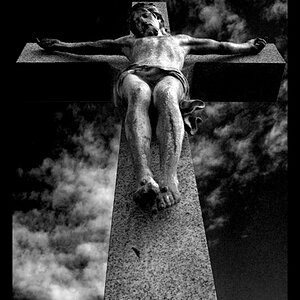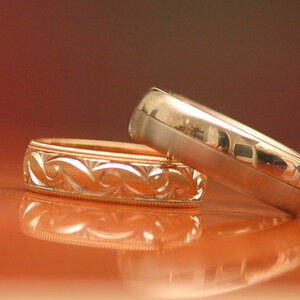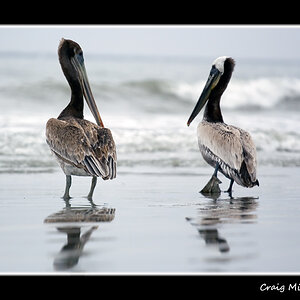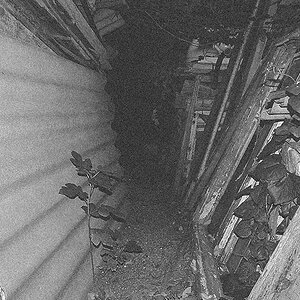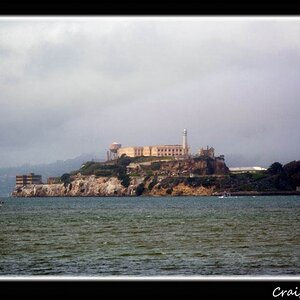Solarflare
No longer a newbie, moving up!
- Joined
- May 24, 2012
- Messages
- 2,898
- Reaction score
- 395
I am a proud owner of a Nikon D5100 and a Nikon D600.
There is a successor for the D600 out (D610) and there are already TWO successors to the D5100 (D5200, D5300).
Yesterday I watched this review of the Pentax K-3 from thecamerastore on YouTube and then it dawned me: NONE of these three new cameras fixes ANY of the bigger issue I have with my own cameras, of course with the exception of the sensor dust of the D600 (which is annoying but not my main problem with that camera).
The biggest problems I have with the D5100:
- No HSS (This is a nobrainer feature. You need to be able to use filllight, even in bright sunlight. Every professional does this all the time. Your camera cant do it ? You are not photographically complete !)
- No second cardslot for Backup (I think thats a total nobrainer and should be in EVERY SINGLE digital camera out there, no matter if point and shoot or whatever. Digital backup is a must - and not a luxury).
- No weathersealing (Again something that should be mandatory). Granted, I just use it in the rain anyway, so far without problems.
The biggest problems I have with the D600:
- There are 39 instead of 15 AF points ... but the way they are distributed is completely stupid, they are all in the center !!! I have less flexibility than with the 15 points of my D5100.
- I can accept that the D5100 is an entry level camera and the viewfinder is kinda, well, meh. But I'm wearing glasses and even with the D600, I still cant see the full image at any time, no matter how hard I try to. In fact it seems I couldnt see it with the D800 or D4 either ! What the frak ?
- The AF points are even harder to select than on the D5100 ! Because there are more AF points, but the technology to select them is still just endless clicking. The only camera that I've seen that fixes this is the new Panasonic GX7, which allows you to use the touchscreen to select focus (probably other cameras with touchscreen allow this as well).
- The button layout is frankly completely stupid and very slow to use. Especially, to change ISO, you have to fiddle with the fingers in your face if you're using the viewfinder.
- I really miss the flipscreen of my D5100 on my D600. Why does Nikon have such a great feature only in one of their cameras ?
Okay, maybe the D610 doesnt really count, because Nikon clearly released that to get rid of the shutter problem. But the D5200 and D5300 are clearly supposed to be upgrades. However, they only gave the camera more megapixels, more AF points, more this and that, but never fixed any core problems in the ergonomics and the lack of photographic completeness.
When I look at the new Pentax K-3, I kind of get the suspicion that the problem is simply how Nikon approaches camera design in itself. Instead of "okay we design a great, complete camera", like Pentax does, we get "okay we want a camera for this and that pricepoint, and we have to make a new model every X months at this pricerange".
There is a successor for the D600 out (D610) and there are already TWO successors to the D5100 (D5200, D5300).
Yesterday I watched this review of the Pentax K-3 from thecamerastore on YouTube and then it dawned me: NONE of these three new cameras fixes ANY of the bigger issue I have with my own cameras, of course with the exception of the sensor dust of the D600 (which is annoying but not my main problem with that camera).
The biggest problems I have with the D5100:
- No HSS (This is a nobrainer feature. You need to be able to use filllight, even in bright sunlight. Every professional does this all the time. Your camera cant do it ? You are not photographically complete !)
- No second cardslot for Backup (I think thats a total nobrainer and should be in EVERY SINGLE digital camera out there, no matter if point and shoot or whatever. Digital backup is a must - and not a luxury).
- No weathersealing (Again something that should be mandatory). Granted, I just use it in the rain anyway, so far without problems.
The biggest problems I have with the D600:
- There are 39 instead of 15 AF points ... but the way they are distributed is completely stupid, they are all in the center !!! I have less flexibility than with the 15 points of my D5100.
- I can accept that the D5100 is an entry level camera and the viewfinder is kinda, well, meh. But I'm wearing glasses and even with the D600, I still cant see the full image at any time, no matter how hard I try to. In fact it seems I couldnt see it with the D800 or D4 either ! What the frak ?
- The AF points are even harder to select than on the D5100 ! Because there are more AF points, but the technology to select them is still just endless clicking. The only camera that I've seen that fixes this is the new Panasonic GX7, which allows you to use the touchscreen to select focus (probably other cameras with touchscreen allow this as well).
- The button layout is frankly completely stupid and very slow to use. Especially, to change ISO, you have to fiddle with the fingers in your face if you're using the viewfinder.
- I really miss the flipscreen of my D5100 on my D600. Why does Nikon have such a great feature only in one of their cameras ?
Okay, maybe the D610 doesnt really count, because Nikon clearly released that to get rid of the shutter problem. But the D5200 and D5300 are clearly supposed to be upgrades. However, they only gave the camera more megapixels, more AF points, more this and that, but never fixed any core problems in the ergonomics and the lack of photographic completeness.
When I look at the new Pentax K-3, I kind of get the suspicion that the problem is simply how Nikon approaches camera design in itself. Instead of "okay we design a great, complete camera", like Pentax does, we get "okay we want a camera for this and that pricepoint, and we have to make a new model every X months at this pricerange".


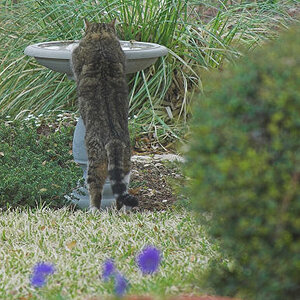
![[No title]](/data/xfmg/thumbnail/37/37930-501fdf314a05686acde53d9899f68091.jpg?1619738402)
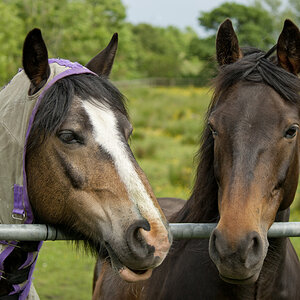

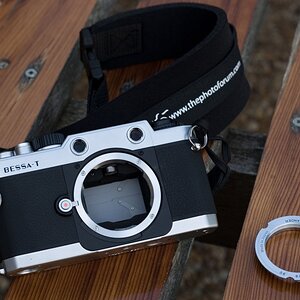
![[No title]](/data/xfmg/thumbnail/39/39444-02925f6d2859f4fda0e89f2001bfc9cd.jpg?1619739034)
